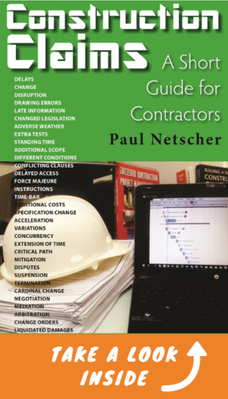 Good communication in construction is essential. Many problems arise because of poor communication, or when our messages are misunderstood. Unfortunately many in construction don’t realize how important it is to be able to communicate properly. Many don’t see the necessity of being able to write properly. Yet, project managers have to write letters all the time. Some of these letters could literally be worth millions of dollars. Why wouldn’t we want to put the effort into producing a clear and succinct letter that will convince our clients and customers to award a project to our company, or grant the variation claim we’ve submitted. So let’s have a quick English lesson – a lesson on writing project letters! Letters should:
Don’t assume the person reading the letter will have a grasp of all the facts, or know what you are talking about. ....Continue Reading..... This article was first published on the ClockShark website. To visit this website and continue reading the article click on the link above. Please share this post  To read more about the author’s books and find out where you can purchase them visit the pages on this website by clicking the links below:
To read more about the author visit the page 'Paul Netscher' Want to contact Paul Netscher please enter your details on 'Contacts' Find out how Paul Netscher can help you construction management construction project management
0 Comments
Leave a Reply. |
Archives
June 2024
Note: We welcome genuine comments, especially comments that add additional information to the subject matter in the article. We however reserve the right to remove inappropriate comments, which includes comments that have nothing to do with the subject, comments that include inappropriate language, and comments that are an advertisement for a product or company, or which include an advertising link. Comments must be in English. We will not enter into discussion on why a particular comment was removed.
CategoriesCopyright 2016 - The attached articles cannot be reproduced for commercial purposes without the consent of the author.
The opinions expressed in the attached articles are those of the writer. It should be noted that projects are varied and different laws and restrictions apply which depend on the location of the contractor and the project. It's important that the reader uses the supplied information taking cognisance of their particular circumstances. The writer assumes no responsibility or liability for any loss of any kind arising from the reader using the information or advice contained herein. "I have what I consider some of the best books on construction management."
Books are available from: Amazon.com Amazon.co.uk takealot.com kalahari.com Amazon.in Amazon.de Amazon.fr Amazon.it Amazon.com.au Powell's Fishpond uread bokus Amazon.ca Amazon.es Other retail stores Available in paperback or on Kindle "28 YEARS OF CONSTRUCTION PROJECT MANAGEMENT EXPERIENCE, DEVELOPING SUCCESSFUL CONSTRUCTION PROJECT MANAGERS AND BUILDING SUCCESSFUL CONSTRUCTION COMPANIES"
|



 RSS Feed
RSS Feed




